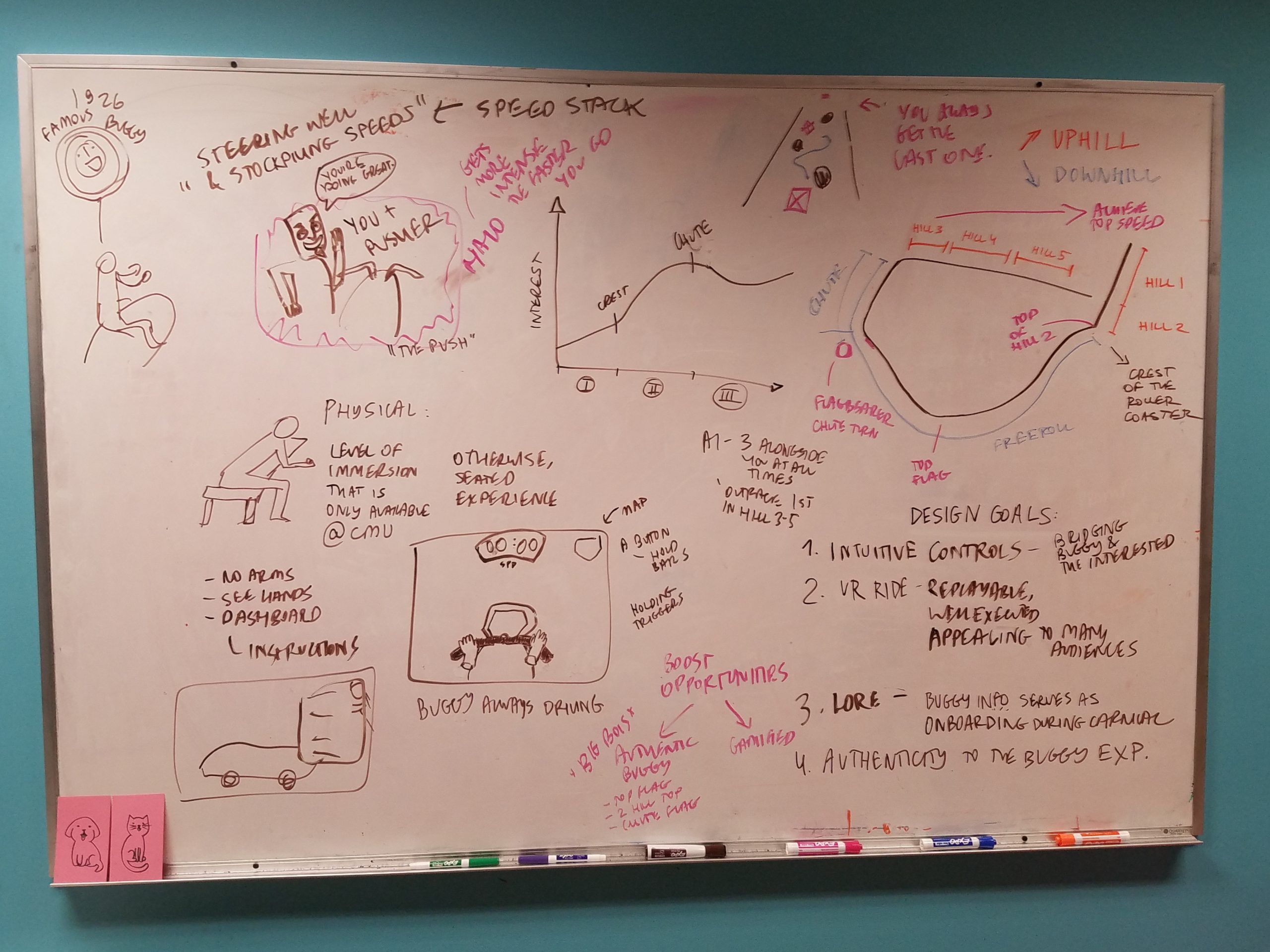Welcome to the Spring 2020 Advanced Game Studio course website! My name is Trento von Lindenberg, and I will be the producer for this semester’s VR Buggy100 project.
Although this site will be used by other members of the team (including Thomas Corbett, our professor and Executive Producer) for various posts, most of the development blogs you see here will be written by me. Although this post (and the next, for Week 02) are written out-of-sequence, there will be regular posts going live every Monday evening starting next week (on February 3rd) unless stated otherwise.
For now, please pardon the delay as we get settled in to the semester, and I hope you enjoy this peek behind the curtains to see what’s going into this massive undertaking!
The Project
This semester, the Advanced Game Studio is banding together to create a Virtual Reality game entirely unique to the Carnegie Mellon experience, in celebration of the centennial anniversary of the Spring Carnival and the phenomena known as Sweepstakes.
Sweepstakes or, as it is more commonly known, Buggy, is a “student-led relay race” held once a year at CMU’s Spring Carnival.
But it’s so, so much more than that — it is no exaggeration to say that Sweepstakes is the culmination of design, engineering, and athletic effort as students team up to build “an aerodynamic vehicle with no engine… Powered by brains and brawn alone.” ( https://www.cmu.edu/buggy/ )
In other words, CMU students get together and build this buggy over the course of the year, engineering it to be as fast as possible, and train almost every week at the crack of dawn to be prepared for race day. It’s a commitment for sure!

The race itself takes place on the above course, with a mixture of uphill and downhill sections. The organization with fastest buggy to reach the finish line wins!
But Buggy is easier understood with visuals than words:
While Buggy is something that everyone at CMU has heard of, if not seen, few have actually participated in it; the hours are rough on a student’s schedule, and the size requirements to be a driver (you must be smaller than 5’3″) mean a lot of people can’t take part.
What that also means, though, is that we have less than 95 days, from the start of the project, to create a full, standalone experience that can be showcased to the general public: a public that would include buggy veterans and novices alike. The project must bridge old and new, celebrating the history while giving newcomers a taste of the excitement around buggy — even if they’ve never taken part.
Which brings us to…
The Game – Buggy100 (Working Title)
To celebrate the Buggy Centennial, we were asked to create a game that takes the player “through time.” Now, while a time-traveling buggy sounds amazing, we decided that it would be more in the spirit of Buggy if the player actually raced — and what would be better than getting to race against the buggies of history? Competing to see who, over all 100 years, really had the best buggy?
After all, the Buggy Centennial is likely to be the biggest celebration in Buggy history!
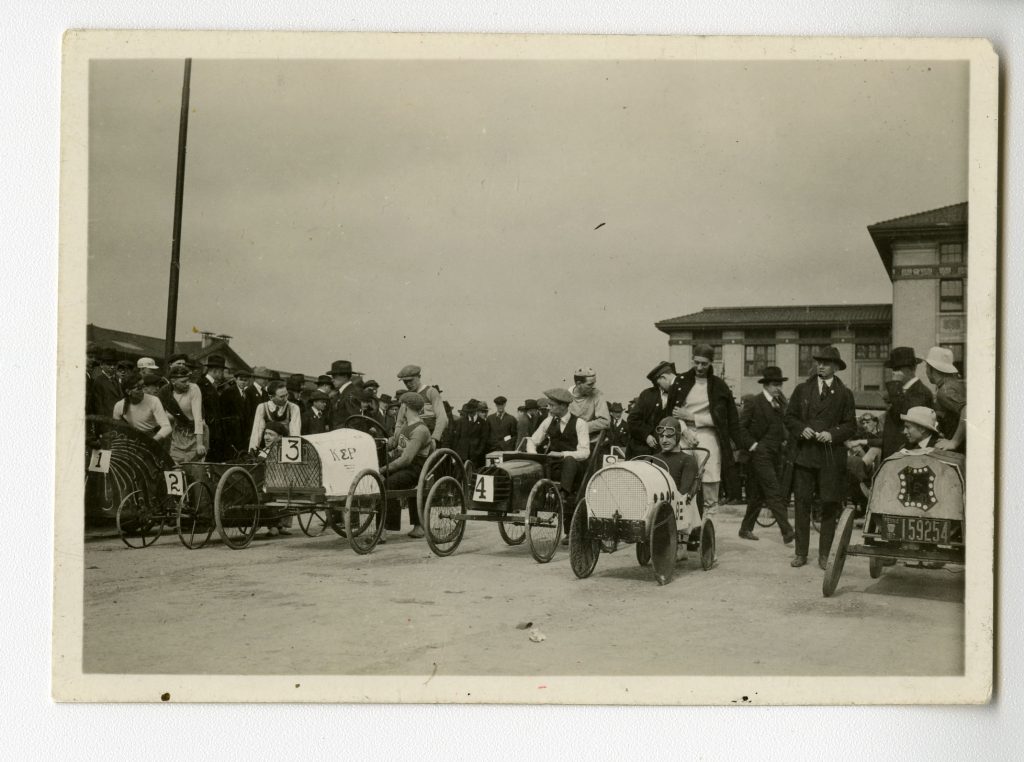
So, with that in mind, we developed the following story setting:
The year is 2020. For the 100th anniversary of Buggy, the President of CMU has invited everyone, across Buggy history, to compete, to see who had the best buggy of all time. Various buggy organizations have entered, hoping to take that coveted title and the Buggy Cup, using their famous buggy designs. This is… the Buggy All-Stars race!
– story blurb by Eric Yu, Art Lead
The player has been appointed as the pilot of the Alumni Association’s buggy, a high tech buggy whose design is inspired by old and modern buggies. Can you take first place in the ultimate buggy race?
Of course, there’s a lot that is going to have to go into the development of this game to make it feel like you’re going through history, and that’s something that we’re still figuring out. But the gist is this:
- The player will race against historical buggies
- There will be some sort of announcer/spectator setup that showcases the other buggies in the race
- The game is set in the present-day, on the day of the Centennial celebration
- The buggies will be split into “eras” — at the start of the race, the player will see more of the early, 1920s buggies. But, as they progress through the race, they’ll start to encounter more modern buggies; in essence, they will be “passing through time.”
The Team
From the start, we knew that this class would not follow the usual group-project structure — or number. While a typical game design class has students divide into groups of around six people, this class has a total of 18 to 20 students, all working on the same project. Even a group of eight can become unmanageable — at 20, it’s almost impossible to communicate and assign tasks effectively!
For that reason, it was decided to break the class down into distinct “teams”, which (for all intents and purposes) mimic the departments you would find in a small video game studio. Art, design, programming, sound, and so on.
Each team consists of roughly 4 to 8 people, with each student sorted into their teams depending on their particular skill sets and interests. Of course, there is some occasional overlap and redundancy — some members of the art/programming team also have a role in the design team, and vice versa. As a result, teams are inherently built to be cross-disciplinary and reinforce communication.
Each team also has a designated “Team Lead,” who is responsible for assigning tasks to those in their team, managing expectations, and communicating with the other leads.
The team leads are as follows:
- Executive Producer: Thomas Corbett
- Producer: Trento von Lindenberg
- Art Lead: Eric Yu
- Design Lead: Adela Kapuscinska
- Programming Lead: Angelo Pagliuca
- Playtesting Lead: Nicole Chu
Technical Details
To create Buggy100, we will make use of the following software (at least, additional software will be added on an as-needed basis):
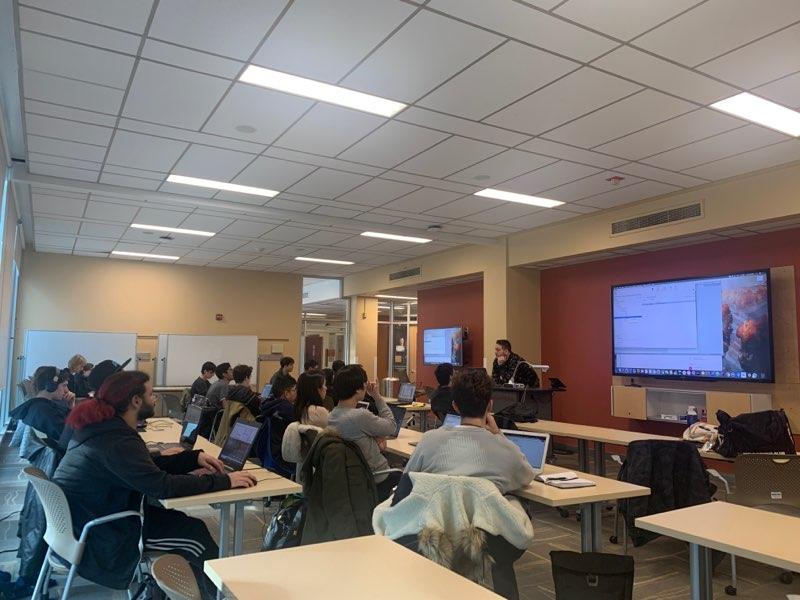
- Game Engine: Unity
- Modeling Software: Blender, Maya, Substance Painter, Mixamo
- Audio Software: FMOD, Pro Tools
- Version Control: Perforce
- Other: Discord (for communication), Trello (task management), Google Drive (file management and documentation)
And now that we’ve gone over what the project is, who is involved, and what we’ll be using for it, it’s time to get into the actual development side of things. Starting with…
Pre-Production
“Before anything else, preparation is the key to success.”
– Alexander Graham Bell
To capitalize on the free time available to us over winter break, the leadership team held regular meetings to establish the basics of our design, production schedule, and an early timeline. By using this time to get everyone on the same page and hammer out some basic design concepts, we hoped to hit the ground running at the start of the new semester.
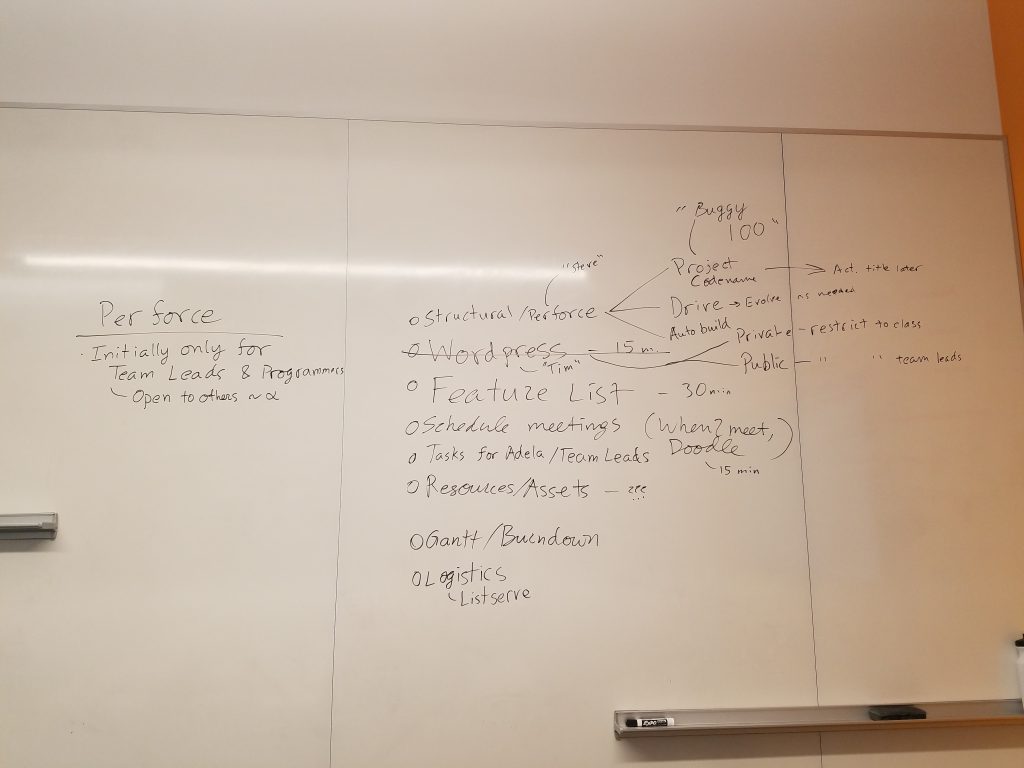
Additionally, the time spent discussing the specifics of how the game might work brought up a number of valuable clarifying questions. For example:
- How will turning/other mechanics work?
- Or, more specifically, “How do we keep people from getting sick?”
- What features do we need in the game?
- How will we keep track of and document our progress?
- What definitively makes this Buggy?
Although we were able to reach satisfying conclusions for some of those questions (after all, you’re reading a piece of documentation right now!), others are still a work in progress — and will continue to be for many, many weeks.
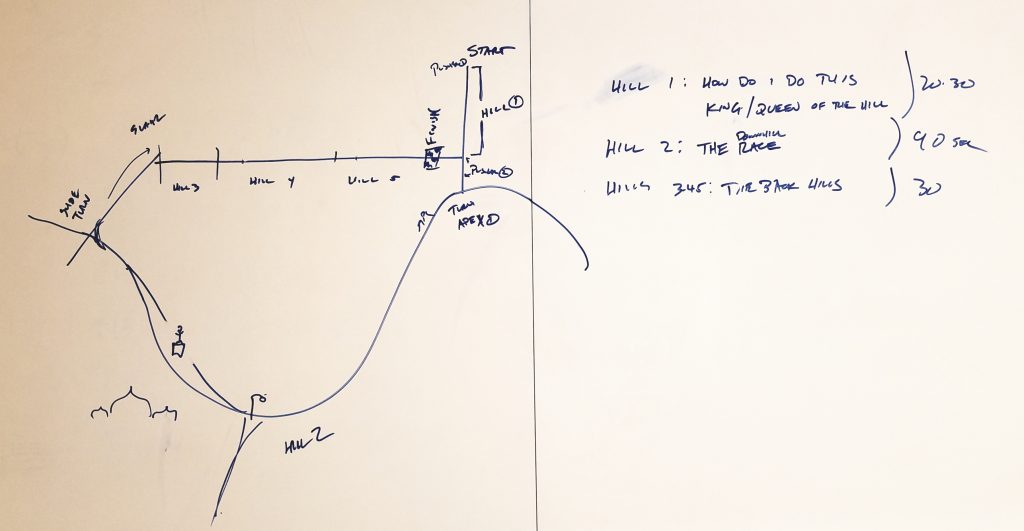
So, the pre-production period was valuable to us as it gave us time to think over those questions and others. But it also gave us time to familiarize ourselves with the ins and outs of Sweepstakes: some of us took to reading the official rulebook, while others scoured the CMUBuggy website for photos and videos of races to add to our historical references. For many of us, this was the first time we had ever heard of the terms listed at the beginning of this post.
We also looked to existing games (seen below) for inspiration, selecting a few based on their art style, mechanics, and genres, and collected those to form the early beginnings of our design documentation.

Render from Link’s Awakening for Nintendo Switch 
Screen capture from Overwatch, by Blizzard 
Character from Fornite, by Epic Games 
Render from Fortnite, by Epic Games
Using these references, each member of the art team was assigned a part of the game that needed concept art. Some were assigned character work, others environment design, and others drew the buggies themselves.
And so, pre-production carried on, with everyone working on some aspect of the early design. Weeks passed, and that brings us to…
The Post-Break Check-in
At the end of break, the students got together to touch base and show off their work. Here is just a small (but impressive!) selection of what was presented.
Art

Concept sketches for different buggies, based on historical images provided by the Alumni Association. By Lisa Lo 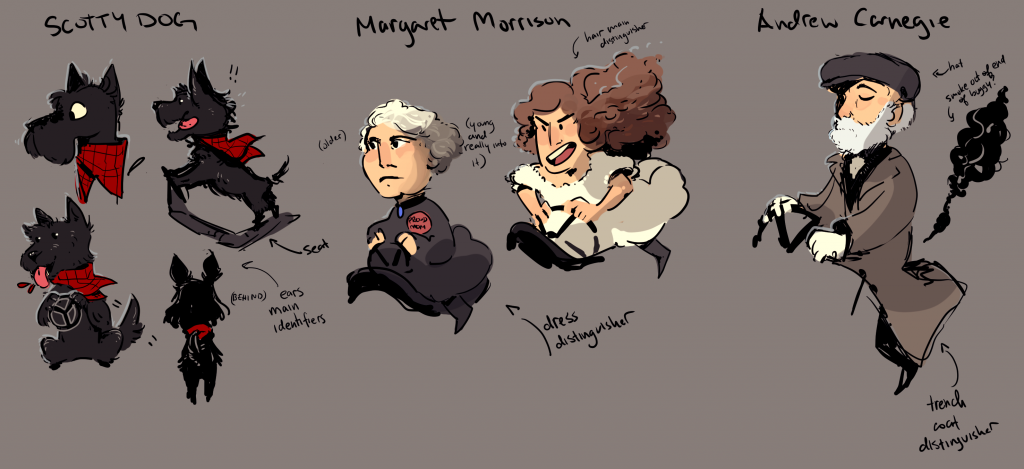
Concept drawings for what the “mascot” pushers could look like, by Vic Naumov 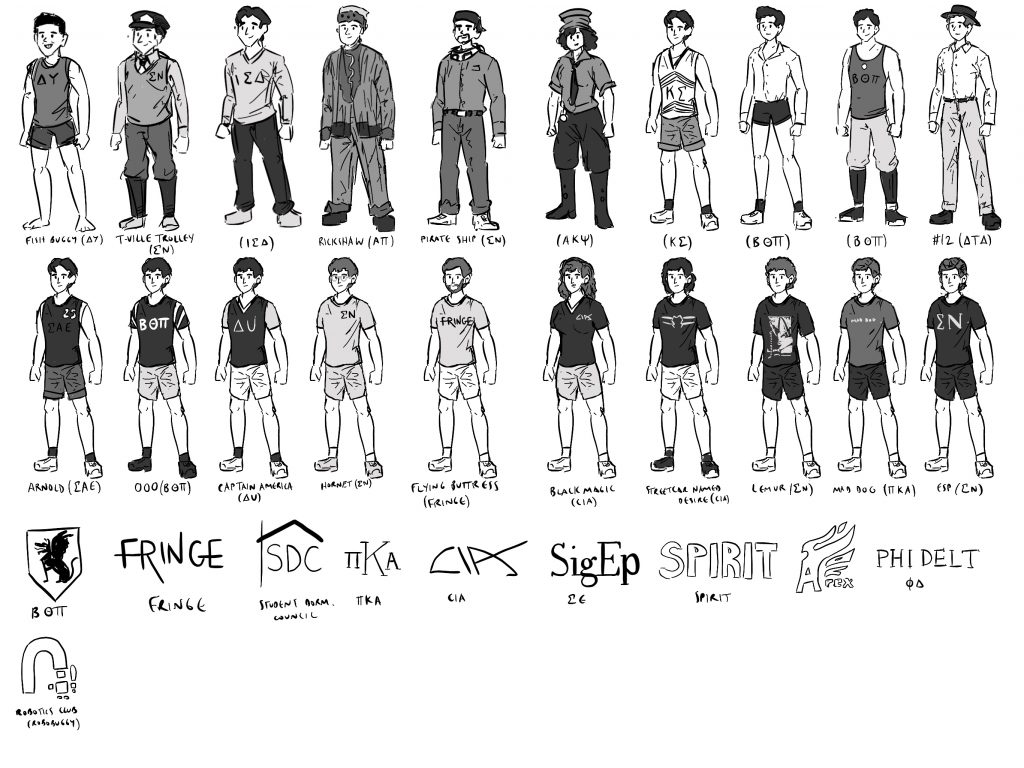
A collection of concept drawing for what the drivers could look like, broken into period and organization, by Sanjay Salem 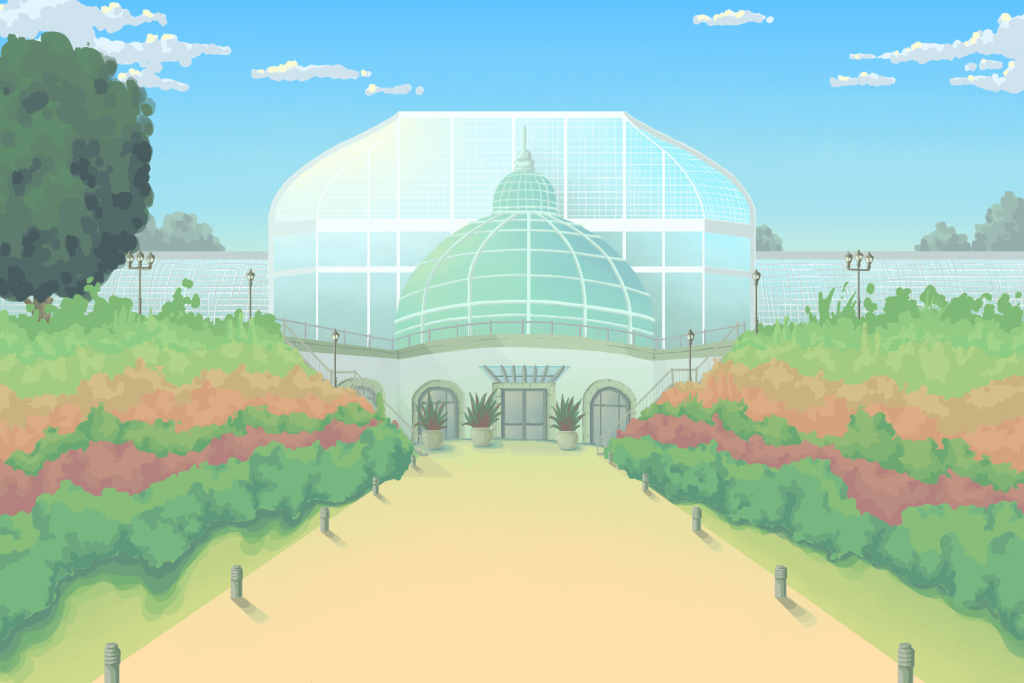
Concept work done to test color palettes and environment styles, by Angelina Shi
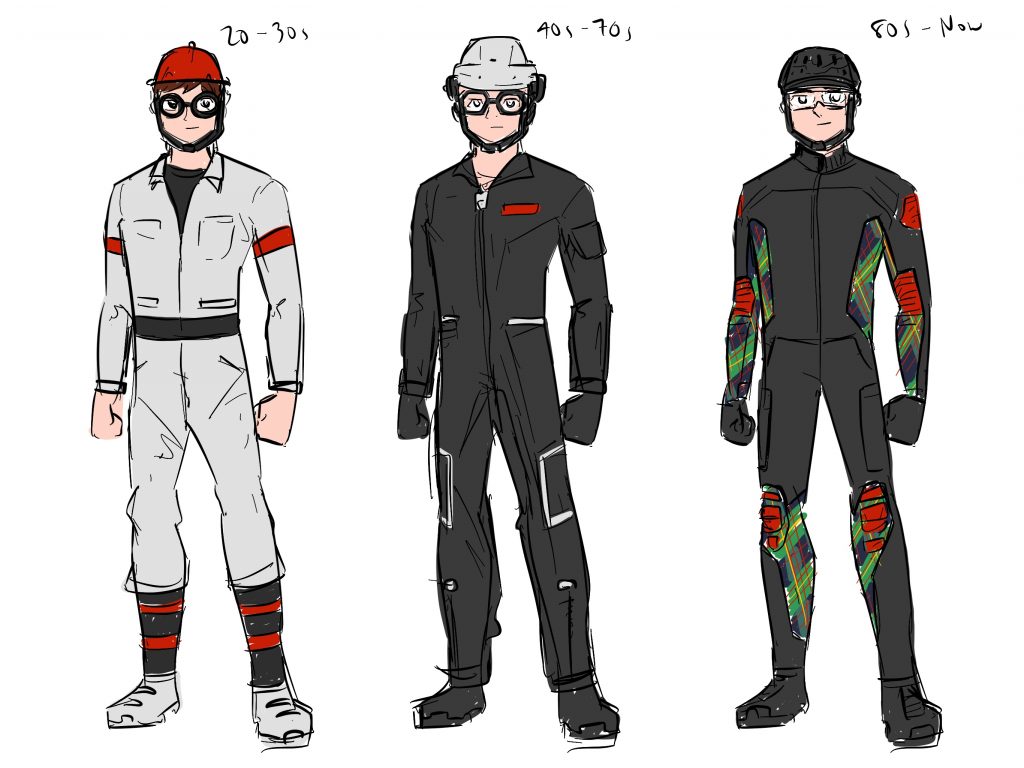
Updated clothing designs for NPCs, by Sanjay Salem 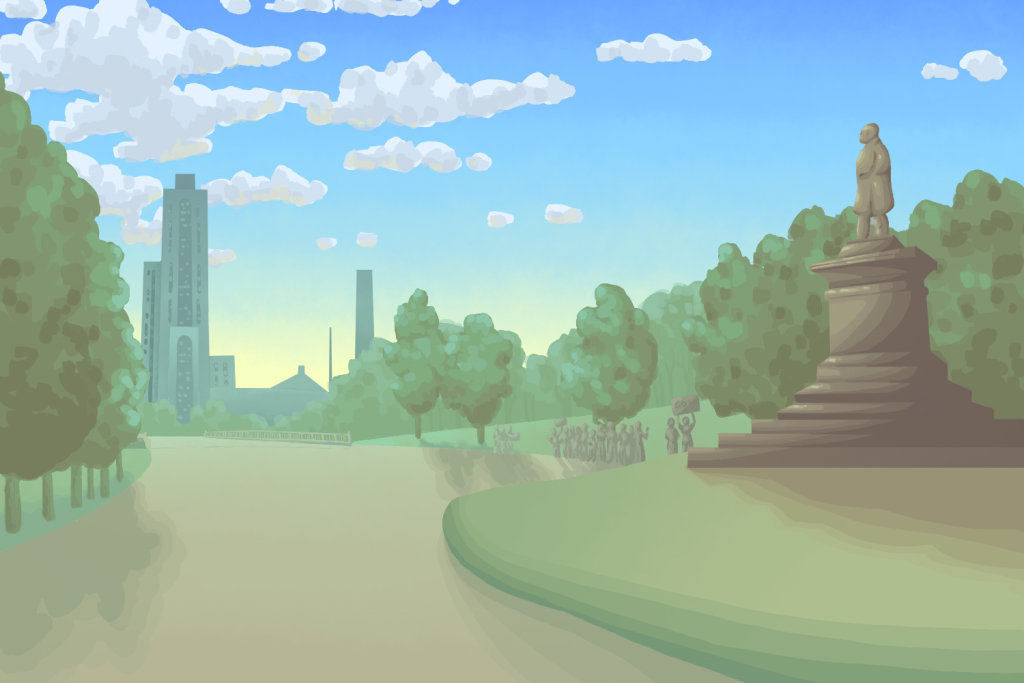
A view of the track from the buggy’s perspective, by Angelina Shi
Taking inspiration from the reference images, our artists put together the above pieces of concept art. Although they might seem simple at first glance, these will go a long way to guide us in the coming weeks!
Design
Goals
The design team was tasked with researching existing racing games (both VR and traditional) in order to determine any standards or conventions that exist. Additionally, they were asked to prepare a set of “design goals” which would become a part of a living “design document.” The goals are as follows:

- Intuitive Controls – Bridges Buggy enthusiasts, VR aficionados, and new users
- VR Fun Ride – Well-executed, replayable, and appealing to many audiences
- Contextual – Incorporates Buggy 100 content & lore
- Authentic to the Buggy experience
You can think of the “design goals” as a framework: they’re meant to guide our choices, and help determine what features should be prioritized, emphasized, or pushed aside. By adhering to them, we can keep the final product in-line with the spirit we set out to create — even if it might look drastically different from what we first expected.
Mechanical “Rules”
However, there also exists a list of stricter rules, drawn from research and requests from the client:
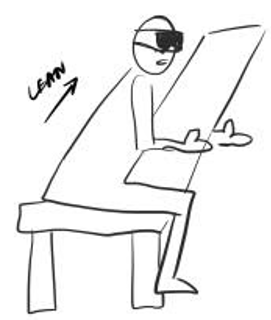
- Buggy is in constant motion
- The Player will be seated upright, or leaning slightly forward
- This is due to accessibility considerations — not all of our players will be able to get into the modern-day buggy position
- Player steers via controllers
- But steering is more like strafing than turning
- Drifting is only a visual effect
- Brake is present but not significant
- Player cannot crash or collide with other buggies
- Player is trying to stack up speed
- Dash Panels
- Special Panels (Crest, Top Flag, Chute Flag, Pusher Handoffs)
- Draft/Slipstream (by following a different buggy)
- Player may run into potholes (which takes away their speed stack).
- The Player (almost) always places
Much like how the design goals guide our features, these mechanical rules influence the next item on the design agenda: Game Elements.
Game Elements
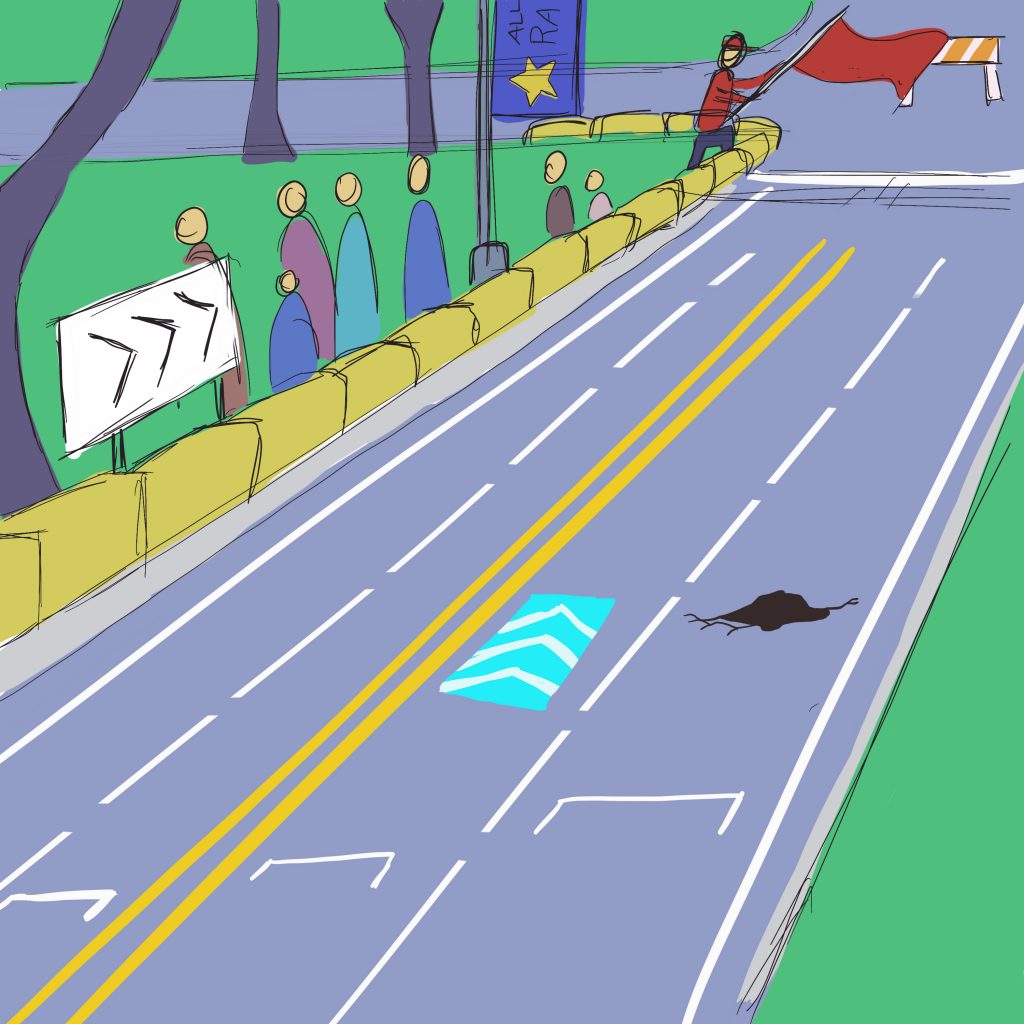
- Boost Pads – Inspired by Mario Kart-style games, some form of boost pad might be ideal to give the player a sense of agency and control.
- Potholes – Creates a mechanical obstacle that players will have to navigate around, inspired by real-life.
- Drafting – Inspired by other racing games, players can “draft” behind other buggies to get extra speed.
- Passing – The more buggies the player passes, the more they’ll see.
- Unique Events
- Timing – What’s a race without the need for speed, and Buggy wouldn’t be Buggy if you weren’t up against the clock! Players will need to race to be the fastest if they want to get the top time against history’s buggies!
- Flagbearers – Timing your turns to enter a passageway at just the right time might give the player a boost.
- Pusher Handoffs – Similarly, navigating to your pusher could help players shave those precious seconds off their time.
Although these elements are still in the early concepting stages, they all have one specific purpose: to turn the Buggy100 VR experience from a strict simulation into a true VR game.
The Interest Curve
All of these elements (design goals, mechanics, and game elements) are brought together to form what will become the user experience in our game. To decide how they come together, though, designers use something called an interest curve.
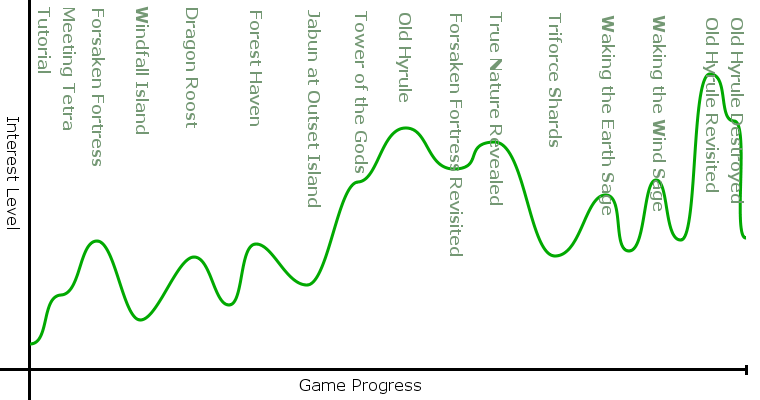
An interest curve, as you might suspect, is a simple chart showing how interested someone is in something, plotted over time. Your typical interest curve for a game, movie, or any other piece of media will typically fluctuate: peaks of excitement are contrasted with relaxing lulls. And that’s a good thing! Too much excitement can lead to a forgettable experience that tires out the mind; just try to remember the plot of the last action movie you saw! Conversely, too many lulls can lead to a… boring and monotonous experience.
So, what matters is not how many peaks or lulls you have, but that the interest curve a) trends upwards and b) ends on a climax! In other words, to have a truly memorable experience, you want your player to walk out of your game with the most exciting moment most fresh in their mind.

Since our game shouldn’t be much longer than three or four minutes, a much simpler curve (seen to the left) is good enough. The main takeaway here is that, like above, our ideal interest curve (in red) needs to have the climax the game be at the end of the game — as the player crosses the finish line.
But this introduces a design challenge: from the interviews we’d gathered, the exciting moments of a Buggy race are when the driver first crests the top of Hill 2 and when they go into the “chute” turn at the bottom of the freeroll. In other words… that leaves a whole third of the race left after the climax!
To solve this issue, the design team must bring together all the elements they’ve collected to turn the current interest curve (in black) to the ideal interest curve (in red). But how exactly that will be done is a topic for playtesting… and future development!
Looking Ahead
With such a large project, it’s crucial to have an early idea of your deliverables, deadlines, and milestones. Additionally, we had to consider major university holidays (e.g. Spring Break) and events (e.g. Game Developer’s Conference, Global Game Jam) which will interfere with the usual work schedule.
With those constraints in mind, we created the following table of major milestones, dates, and expectations:

With only two weeks to the first milestone (our prototype), there isn’t much time to lose! Everyone will be hard at work in the coming weeks: The design team will be researching additional game elements and control schemes to hand off to the others for implementation, while the others will be modeling “grayboxed” art and coding together a functioning game!
See you in the next update!
